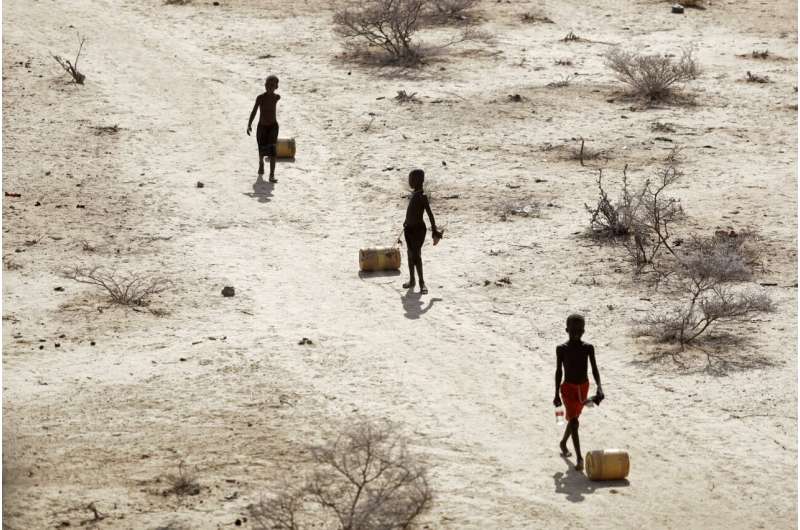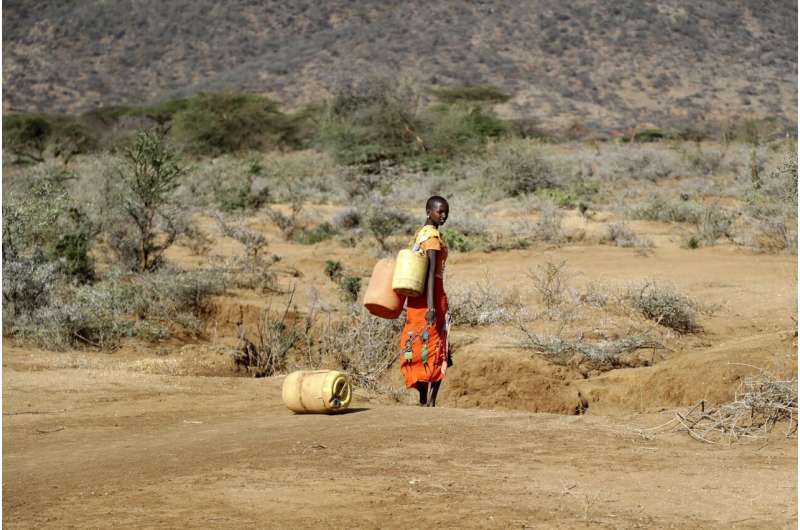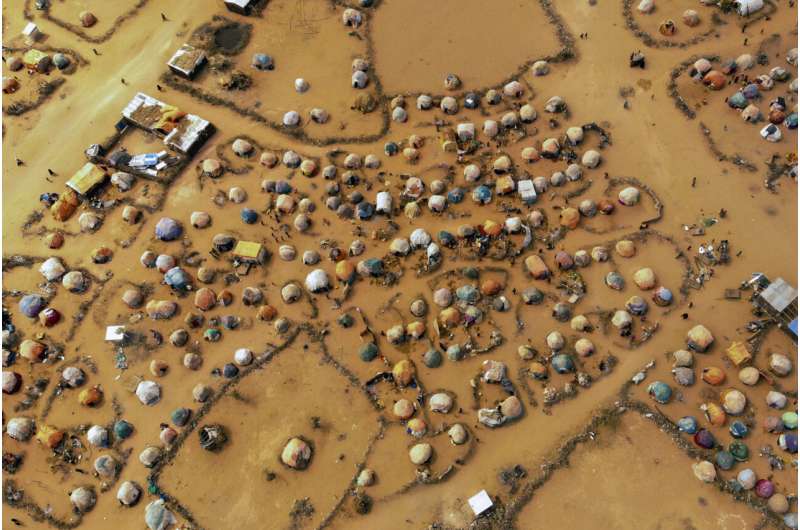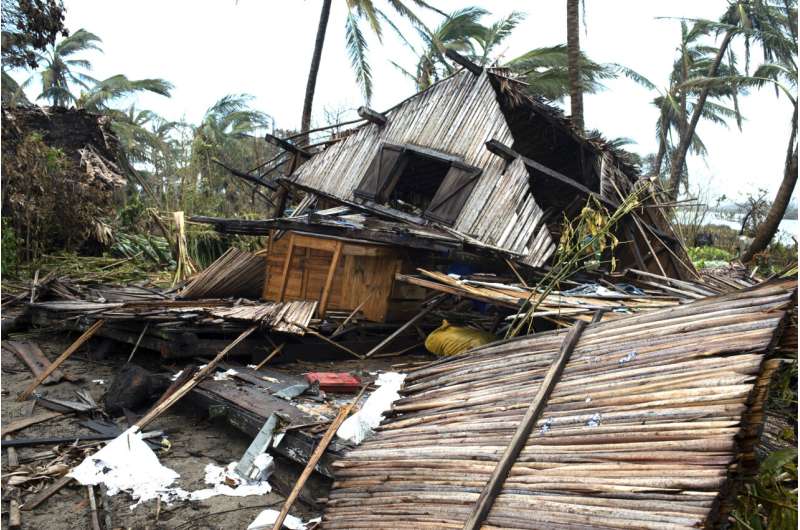This article has been reviewed according to Science X's editorial process and policies. Editors have highlighted the following attributes while ensuring the content's credibility:
fact-checked
reputable news agency
proofread
East coast African states ail from too much, too little rain

Surrounded by miles of dried land and what remains of his famished livestock, Daniel Lepaine is a worried man. Dozens of his goats in Ngong, a town in southern Kenya, have died after three years of harrowing drought in the east and Horn of Africa. The rest are on the verge of starvation as rain continues to fail.
"If this drought persists, I will have no livelihood and nothing for my family," Lepaine mourned. "We are praying hard for the rains."
But a few thousand miles south, communities are facing the opposite problem.
Tropical Cyclone Freddy, which has already caused 21 deaths and displaced thousands of others in Madagascar and Mozambique, is set to make landfall in Mozambique once more on Friday. The nation is already suffering from Freddy's first battering last month and severe flooding before that.
Meteorologists told The Associated Press the uneven and devastating water distribution across Africa's east coast states is caused by natural weather systems and exacerbated by human-made climate change with cyclones sucking up water that would otherwise be destined for nations further north.
"The trend has always been two contrasting weather systems," said Evans Mukolwe, the former head of Kenya's meteorological department. "Intensified cyclones in the southern Africa region translates into drought on the eastern side including Horn of Africa."

The current drought in the region began in late 2020, when the region's short rains season failed. Meteorologists traced the lack of rain to the start of La Nina in late summer of the same year, the natural and cyclical weather event that cools sea surface temperatures in the Pacific, with knock-on effects for the African continent and the rest of the world.
La Nina, together with El Nino and the neutral condition are called ENSO, which stands for El Nino Southern Oscillation. These events have the largest natural effects on climate and can dampen or juice up the effects of human-caused climate change.
"There is a connection between the El Nino Southern Oscillation, rainfall patterns and drought in east and southern Africa," said climate scientist Marjahn Finlayson. La Nina means east Africa "would be primed for drier conditions while southern Africa would be more primed to experience wetter and more humid conditions."
When it comes to tropical cyclones, ENSO is a large factor in where they form and end up, said Anne-Claire Fontaine, a scientific officer with the World Meteorological Organization's tropical cyclone program.
El Nino favors tropical cyclones forming over the central basin of the Indian Ocean that then move toward the south pole, Fontaine said. "Whereas La Nina favors tropical cyclone formation over the eastern to central part of the basin and zonal tracks running westward to south westward" where it slams into southern Africa.

The damaging La Nina was declared over on Thursday by the U.S. National Oceanic and Atmospheric Administration, which meteorologists say might spell better news ahead for the continent.
"It means that we will be entering an ENSO-neutral period until about June or so," said Finlayson, when El Nino is then expected to take over—potentially zapping the drought.
"End of La Nina means El Nino rains. But this may not happen immediately. For Africa, El Nino rains are normally expected in the short rains seasons which run from October to December," said Mukolwe.
But there's still the effect of climate change, which is worsening cyclones and drought by making them longer, more intense and more severe, according to the United Nations' weather agency. Studies going back to mid-1980s suggest there is a clear link between warmer oceans and the intensity and number of cyclones.
Africa is particularly vulnerable to climate change and extreme weather events like floods, cyclones, droughts, wildfires and sandstorms because it has less capacity to prepare for natural disasters, according to a U.N. report. The continent only contributes about 4% of the world's greenhouse gas emissions but suffers disproportionately.

Southern Africa is still in the throes of its cyclone season, with heavy flooding killing dozens, destroying homes and uprooting communities. Since 2019, the region has borne the brunt of 20 cyclones. A scientific analysis of the cyclones in the region last year found that climate change made the tropical storms more damaging and intense.
Meanwhile in the east and Horn of Africa, now in its sixth straight dry season, communities are counting huge losses. Authorities say 11 million livestock and iconic wildlife species have died due to the drought, leaving pastoralist families in abject poverty. Over 6,000 wild animals were lost to drought in Kenya alone by mid-February, according to the Kenya Wildlife Service, including elephants, giraffes and wildebeests.
But Finlayson is cautiously optimistic for the east of the continent in the short to medium term.
"Predictions are that we should expect a strong El Nino that will last from June to August," she said, which would provide better conditions on Africa's east coast. "It may be likely that we see those effects in the boreal autumn, but we have to wait and see."
© 2023 The Associated Press. All rights reserved. This material may not be published, broadcast, rewritten or redistributed without permission.





















